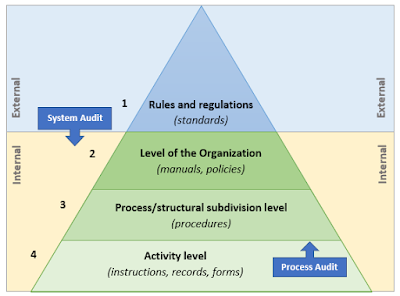The comparison materials are presented in a table format, containing ISO 45001:2018 Clauses, corresponding OHSAS 18001:2007 and ISO 9001:2015 clauses, content of changes and recommended actions to transfer the OH&S to the new version (if changes are present).
The product features
- Traditional clauses conformity table of OHSAS 18001:2007 and New versions of ISO 45001:2018 and ISO 9001:2015.
- Analysis of changes.
- Implementation recommendations for each change.
- Easy to use table format
- Printable PDF
- 28 pages
For a limited in October/November 2017 we offer this document as a free download. Visit our website to claim your copy.



